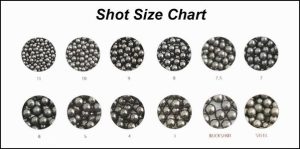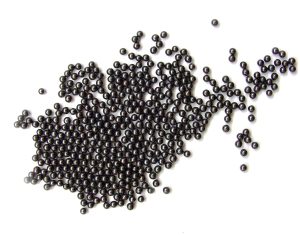Unpacking the Pellet Count in 12-Gauge Shotgun Shells
Three of the most commonly used 12-gauge shotgun shells sizes, #7.5, #8, and #9, each offer unique characteristics that make them suitable for different wing and clays applications. The smaller the gauge number, the larger the shotgun’s bore and correspondingly, the shell size. For instance, a 12-gauge shotgun, the most popular type, has a bore diameter of approximately .73 inches. This size, along with the length and payload, directly impact the number of pellets a shell can contain, the power of the shot, and other key performance characteristics.
Alongside gauge, the size of individual pellets within the shell is a crucial factor. The pellet size is denoted by a number on the shell, with larger numbers indicating smaller pellets. Thus, a #9 shell contains smaller but more numerous pellets than a #7.5 shell. The choice of pellet size primarily hinges on the intended use of the shotgun, whether it’s for hunting, sport shooting, or home defense.

It’s essential to note that the composition of the pellets can vary, typically being made of steel, lead, or other materials. Along with the type of gunpowder in the shell, this choice further influences the shell’s performance – for instance, lead pellets are denser and therefore carry more energy, while steel pellets are lighter but may travel at higher velocities.
Decoding the Number of Pellets in #7.5, #8, #9 Shells
When it comes to understanding the number of pellets in different shotgun shells, it’s crucial to remember that larger numbers translates into smaller pellets. This means a #9 shell will contain more pellets than a #7.5 shell, given the same shell size. Roughly, a 12-gauge shell loaded with #9 lead shot contains about 585 pellets, while the same shell loaded with #8 lead shot has about 410 pellets, and with #7.5 lead shot has about 350 pellets.
These numbers, however, can vary based on factors like the specific load, manufacturer and the length of the shotgun shell itself. Some shotgun shells may also contain a mixture of pellet sizes, providing a balance between pellet count and pellet energy. Regardless, the general trend remains – smaller shot sizes provide more pellets, but each individual pellet carries less energy.
Further, the distribution of these pellets upon firing – known as the shot pattern – can also differ based on the pellet size. Smaller pellets tend to spread out more, potentially increasing the chances of hitting a target but reducing the impact of each individual pellet.

The Impact of Pellet Count on Shooting Accuracy
It’s often assumed that a higher pellet count automatically equates to better shooting accuracy. While this may hold some truth, particularly for beginners or for shooting at moving targets, there are numerous other factors at play. For one, while a higher pellet count increases the odds of hitting a target, it also typically means a wider shot spread, which can reduce accuracy at longer distances.
Moreover, smaller pellets, while numerous, carry less energy and can be more easily deflected by wind or other environmental factors. They also lose velocity more rapidly than larger pellets, which can further impact long-range accuracy. Therefore, shot selection should be carefully tailored to the shooting conditions and the shooter’s skill level.
Analyzing the Practical Uses of Different Gauge Shells
The selection of shotgun shell size is primarily driven by its intended use. For example, #7.5, #8, and #9 shells, due to their smaller size, are often used in bird hunting and clay target shooting, where a wide spread and large number of pellets can increase the chances of hitting the swift and unpredictably moving targets. These sizes are also commonly used in youth shooting competitions due to their relatively lower recoil.
On the other hand, for hunting larger game or for home defense, shells with larger pellets (#4 or #6, for example) are often preferred. These deliver a smaller number of pellets, but each pellet carries more energy, enabling it to penetrate deeper and cause more damage.
Understanding the nuances of shotgun shell sizes and pellet counts is crucial for any sporting shotgun user. By considering factors such as the intended use, shooting conditions, and personal comfort, users can make informed decisions about the best shell size for their needs. And while #7.5, #8 and #9 shells offer a high pellet count and wide spread ideal for bird hunting and target shooting, the final choice always hinges on the unique needs and preferences of the individual shooter.
# # #


Comments